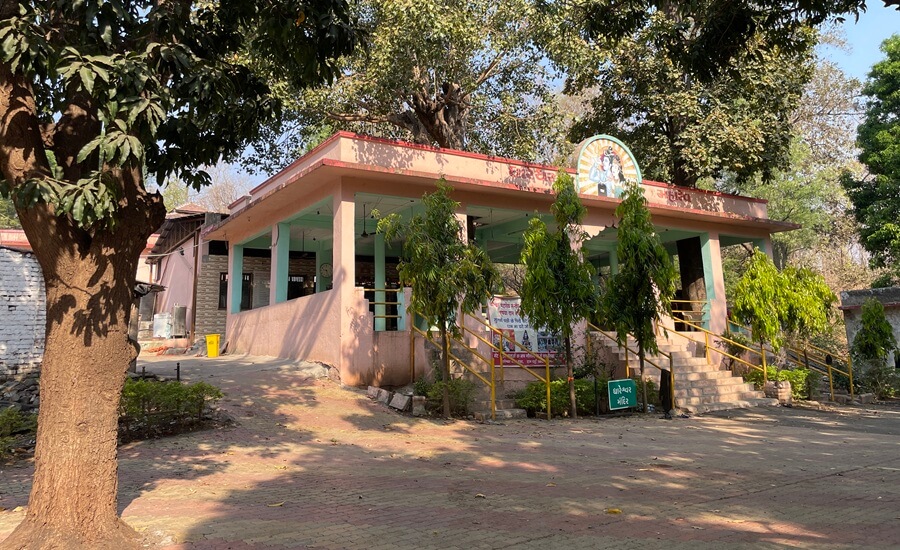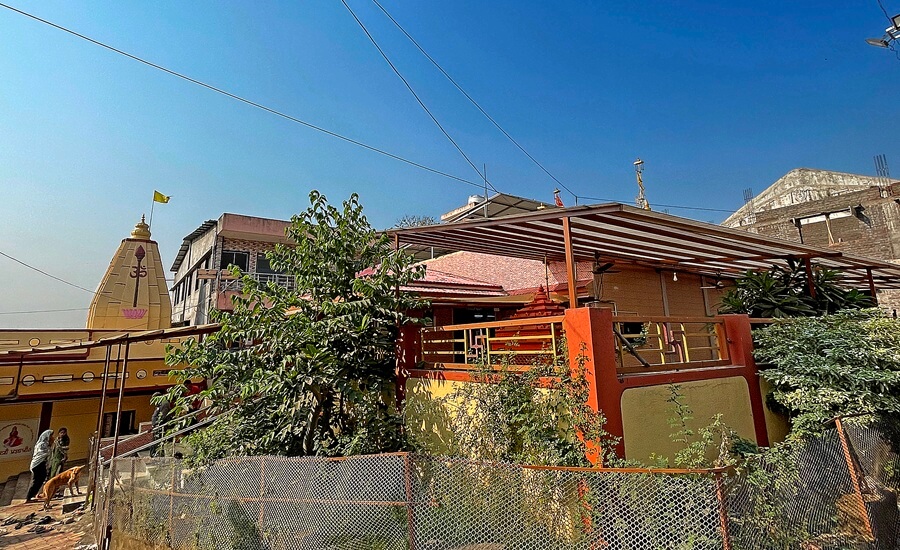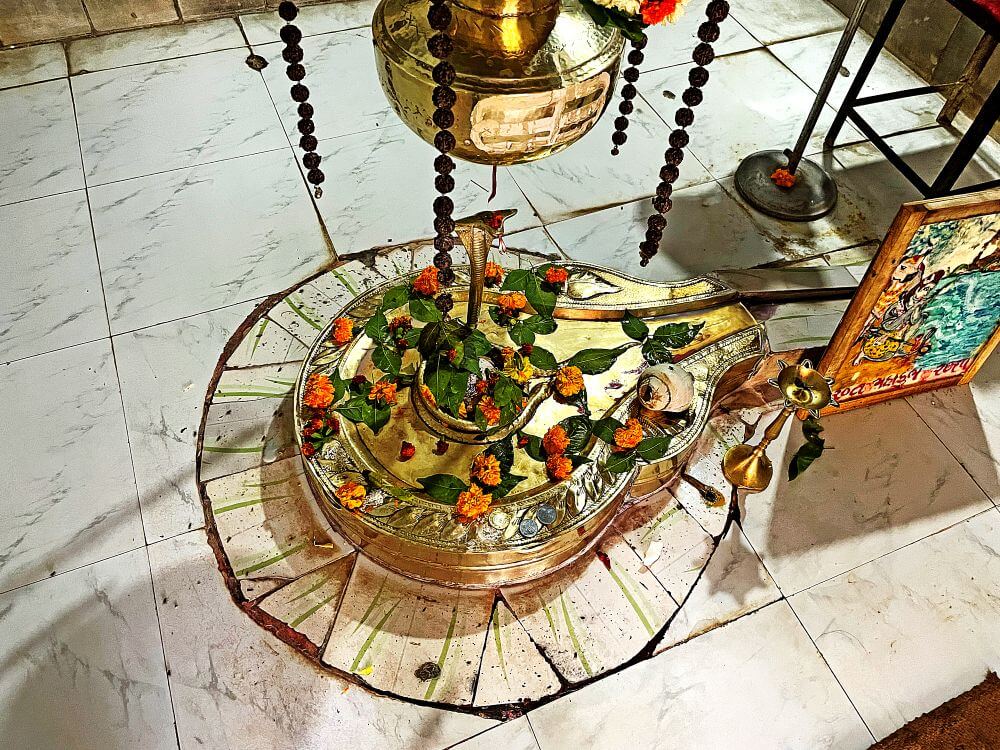
According to ancient legend, the Gomukh Mahadev Temple in Don village is the sacred place where Rishi Gautam performed penance and where, upon Lord Shiva’s invocation, Ganga emerged on Earth. A unique feature of this temple is the Gomukh (cow’s mouth-shaped spout), from which water flows perennially and then mysteriously disappears into the surrounding hills. For this reason, it is also called the Gupt Ganga (Hidden Ganges). Every day, many devotees visit to offer prayers at the ancient Shivling and to drink the holy water from the Gomukh. A large waterfall nearby makes the temple a popular spot for pilgrims and tourists, especially during the monsoon.
The temple is associated with a legend that mentions Sage 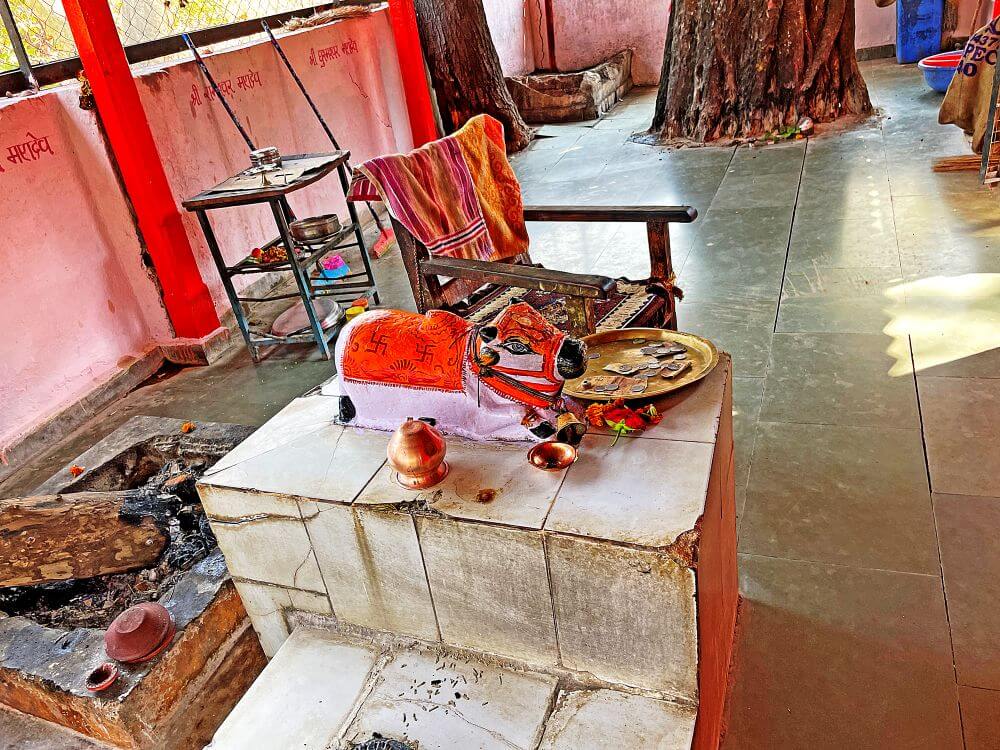 Gautam, referenced in ancient texts such as the Yajurveda, Brahadaranyaka Upanishad, Ramayana, Mahabharata, Ganesh Purana, and Vamana Purana. Known for the story of Ahalya’s redemption, Sage Gautam once committed the sin of cow slaughter. To cleanse this sin, he undertook severe penance in this forest. Pleased with his devotion, Lord Shiva appeared before him. Rishi Gautam confessed his sin and sought a way to purify himself. Shiva advised him to bathe in the Ganga, then invoked her to appear at this very spot. Gautam bathed in the newly emerged Ganga and was absolved of his sin.
Gautam, referenced in ancient texts such as the Yajurveda, Brahadaranyaka Upanishad, Ramayana, Mahabharata, Ganesh Purana, and Vamana Purana. Known for the story of Ahalya’s redemption, Sage Gautam once committed the sin of cow slaughter. To cleanse this sin, he undertook severe penance in this forest. Pleased with his devotion, Lord Shiva appeared before him. Rishi Gautam confessed his sin and sought a way to purify himself. Shiva advised him to bathe in the Ganga, then invoked her to appear at this very spot. Gautam bathed in the newly emerged Ganga and was absolved of his sin.
Another story tells of a drought during the Satya Yuga, when Rishi Gautam, while traveling through the forest, stopped near this village. The villagers requested his help in solving their water crisis. Using his spiritual power,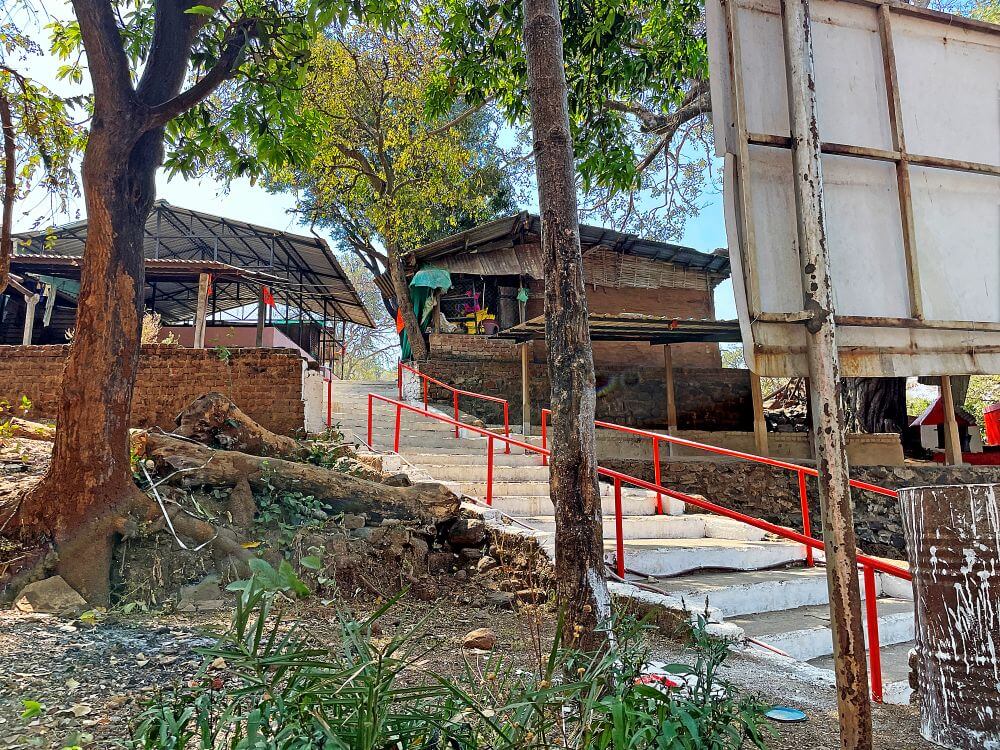 Gautam summoned the Ganga, ending their suffering. Later, he established a Shivling at this site. Because sunrays once directly touched this Shivling through the mountain peaks, Lord Shiva here was also known as Ratneshwar Mahadev.
Gautam summoned the Ganga, ending their suffering. Later, he established a Shivling at this site. Because sunrays once directly touched this Shivling through the mountain peaks, Lord Shiva here was also known as Ratneshwar Mahadev.
According to lore, Don is named after the ancient ashram of Rishi Dronacharya, who resided here. The village lies 13 km from Songadh and about 4 km off the main highway, accessible via a forest road. The temple is located in a corner of the village, below a spacious plateau. Visitors descend around 80 steps to reach the temple. The first structure seen is the domed shaped shrine of Ratneshwar Mahadev Temple painted in saffron color. Atop this spire is a large painted Shivling. 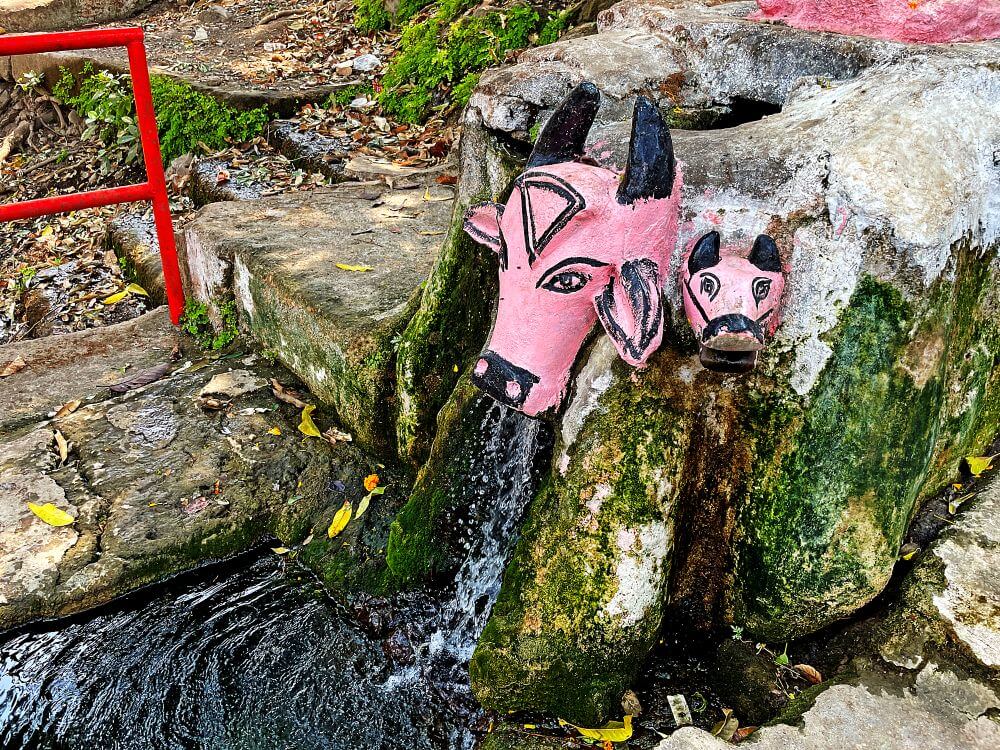 Nearby is a raised platform with a temple of Lord Ganesha. From this platform, two pathways lead to the main temple.
Nearby is a raised platform with a temple of Lord Ganesha. From this platform, two pathways lead to the main temple.
The temple comprises a metal-roofed sabhamandap (assembly hall) and a sanctum (garbhagriha). Within the sabhamandap is a Yajna Kund (sacred fire pit), along with statues of Nandi and a tortoise on small platforms. A beautiful mural of Lord Shiva adorns the right wall. Other painted panels depict Ram, Lakshman, Shabari, and Hanuman meeting Lord Ram.
To the left of the entrance to the sanctum is an idol of Hanuman in an elevated niche that appears ancient based on its craftsmanship. To the right side of the sanctum’s entrance is an idol of Ganesha clad in red pithamber (a traditional garment), adorned with gold plating.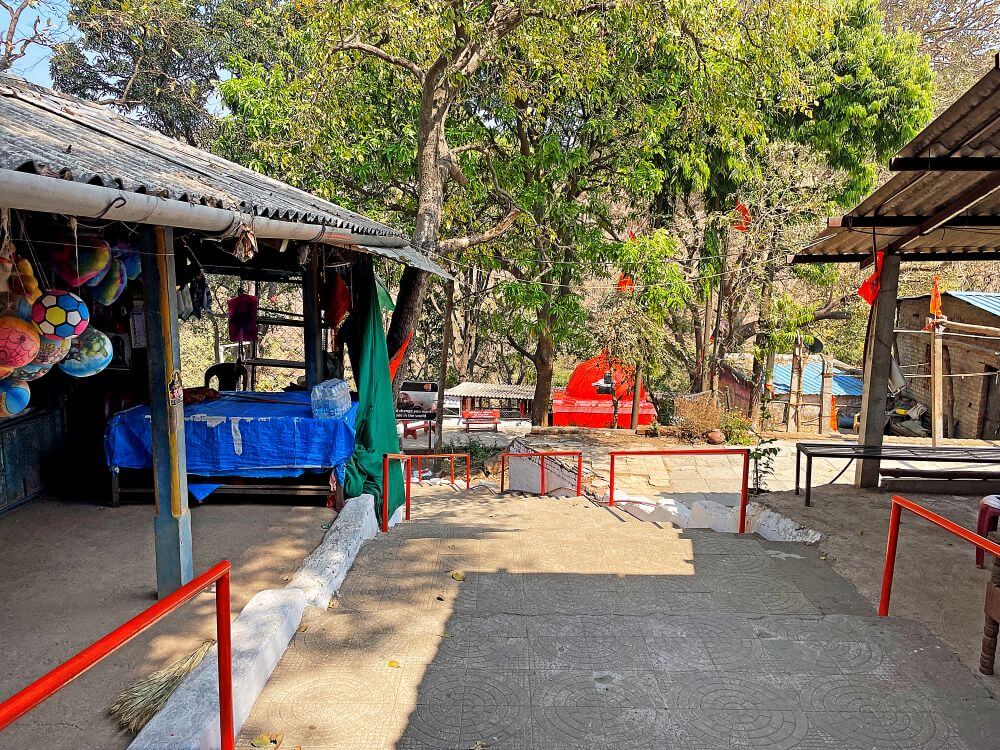 In the center of the sanctum stands a Shivling under which a serpent provides shade. Abhishek (ritual bathing) occurs on this Shivling through an overhead channel. There is also a canopy above it. On the back wall behind the Shivling is an idol of Goddess Parvati.
In the center of the sanctum stands a Shivling under which a serpent provides shade. Abhishek (ritual bathing) occurs on this Shivling through an overhead channel. There is also a canopy above it. On the back wall behind the Shivling is an idol of Goddess Parvati.
A unique feature of this temple is that directly below its sanctum lies the origin point of the Ganges. To preserve its original structure during attempts at renovation or restoration, villagers have not altered any part of it. One can reach this origin point by descending some steps from Mahadev’s temple.
Beneath the temple lies a large water reservoir (kund), surrounded by iron grills for safety. 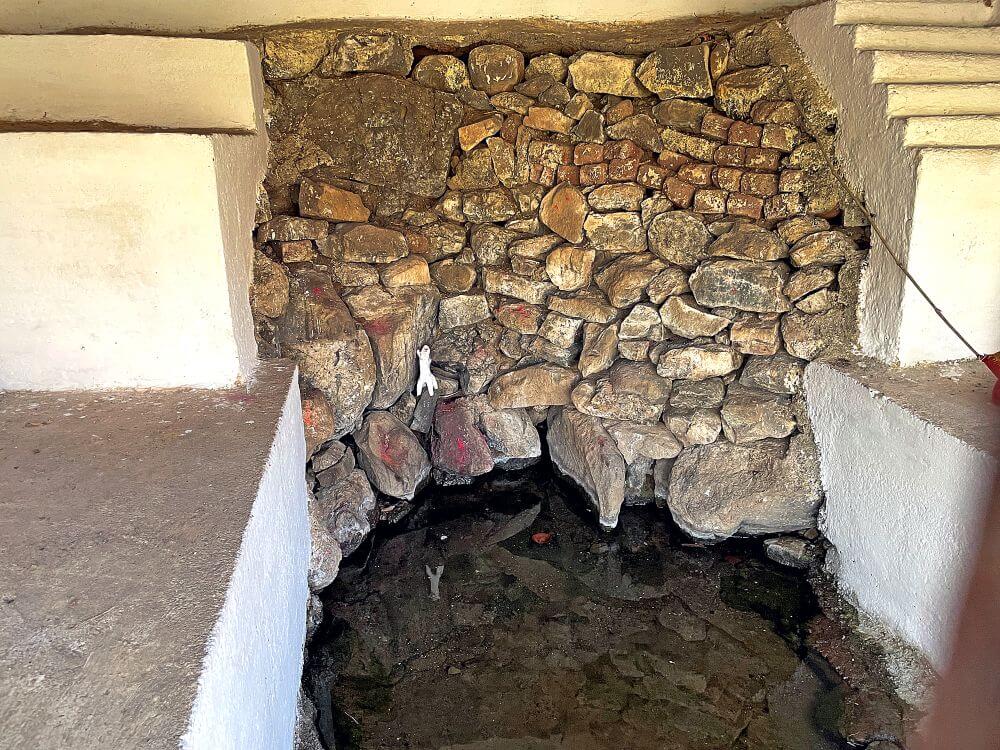 A small marble idol of Ganga is placed here. Water flows from a Gomukh into a lower pond, and then into another kund below, both having their own Gomukhs. Water constantly flows, but its ultimate destination is unknown, as it disappears into the mountains. Above the Gomukh is a small idol of Shiv. The water is considered sacred, and devotees drink it with devotion.
A small marble idol of Ganga is placed here. Water flows from a Gomukh into a lower pond, and then into another kund below, both having their own Gomukhs. Water constantly flows, but its ultimate destination is unknown, as it disappears into the mountains. Above the Gomukh is a small idol of Shiv. The water is considered sacred, and devotees drink it with devotion.
In addition to this temple complex, there is also a small Hanuman temple nearby where monkeys and langurs are commonly found. A waterfall exists some distance from here with steps leading down to it. During monsoon season, devotees and tourists enjoy bathing under this waterfall that cascades from about 15 feet high down into pools below. Close to this waterfall is another temple dedicated to Mother Amba.
Devotees from Surat, Bardoli, Navsari, Navapur, and other towns come here for darshan (viewing) and family outings for day trips, especially on Saturdays and Sundays, when there is often a large crowd.
